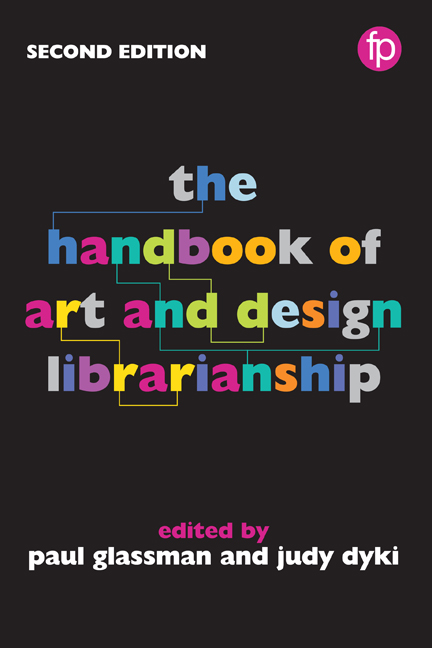Book contents
- Frontmatter
- Contents
- List of figures and tables
- Notes on contributors
- Foreword
- Preface
- Part I Roles and responsibilities
- Part II Materials and collection management
- Part III Teaching and learning
- Part IV Knowledge creation
- Part V The physical environment
- 25 New, renovated and repurposed library spaces: responding to new demands
- 26 Why is that column in the middle of the room? Success in creating classrooms for library instruction
- 27 Finding common ground: creating library spaces for collaboration
- Part VI Promotion and sustainability
- Appendix Library profiles
- Index
26 - Why is that column in the middle of the room? Success in creating classrooms for library instruction
from Part V - The physical environment
Published online by Cambridge University Press: 08 June 2018
- Frontmatter
- Contents
- List of figures and tables
- Notes on contributors
- Foreword
- Preface
- Part I Roles and responsibilities
- Part II Materials and collection management
- Part III Teaching and learning
- Part IV Knowledge creation
- Part V The physical environment
- 25 New, renovated and repurposed library spaces: responding to new demands
- 26 Why is that column in the middle of the room? Success in creating classrooms for library instruction
- 27 Finding common ground: creating library spaces for collaboration
- Part VI Promotion and sustainability
- Appendix Library profiles
- Index
Summary
Introduction
As hands-on instruction becomes essential in the information literacy curriculum, librarians and library administrators may find themselves planning or proposing spaces that support their instructional goals and nurture those needs through responsive design decisions. To be effective, libraries are with increasing frequency moving toward locating, designing, equipping and furnishing functional, flexible and comfortable electronic classrooms (Primary Research Group, 2008). Whether or not an architect is available for assistance, considering essential criteria and making responsive design decisions results in spaces that are functional, flexible and forgiving.
This chapter is based on experiences with spaces at Hofstra University, Felician University and Yeshiva University, all in the metropolitan New York region. It proposes a set of guidelines for ensuring greater success in the realization of the library instruction classroom. The chapter title derives also from experience at those institutions, where the spaces available contained structural columns almost in their centres, serving not only to support the floors of the spaces above, but also, on a metaphorical level, to suggest the occasional impediments and constraints that confront planners and designers of any interior volumes. Creative problem solving requires accommodations to inherent obstacles, and planners and designers who expect the unexpected are more likely to be able to surmount those obstacles and achieve their goals.
Several questions are likely to emerge in the early stages of the planning process:
• What is the right space for library instruction?
• How do we propose a project of that magnitude?
• What happens if the architect doesn't listen to us?
• Can we do this on our own, without an architect?
• Do we want fixed seating?
• What type of equipment is needed?
• What should the capacity be?
With the increasing demand for electronic classrooms and the measurable benefits smart classrooms have in effective information literacy instruction, librarians are being asked to provide improved learning environments for their students. This chapter illustrates prototypes for shaping learning spaces to respond to changing learning needs and takes the shape of a set of practical guidelines for managing design and construction projects of this type.
- Type
- Chapter
- Information
- The Handbook of Art and Design Librarianship , pp. 277 - 286Publisher: FacetPrint publication year: 2017



